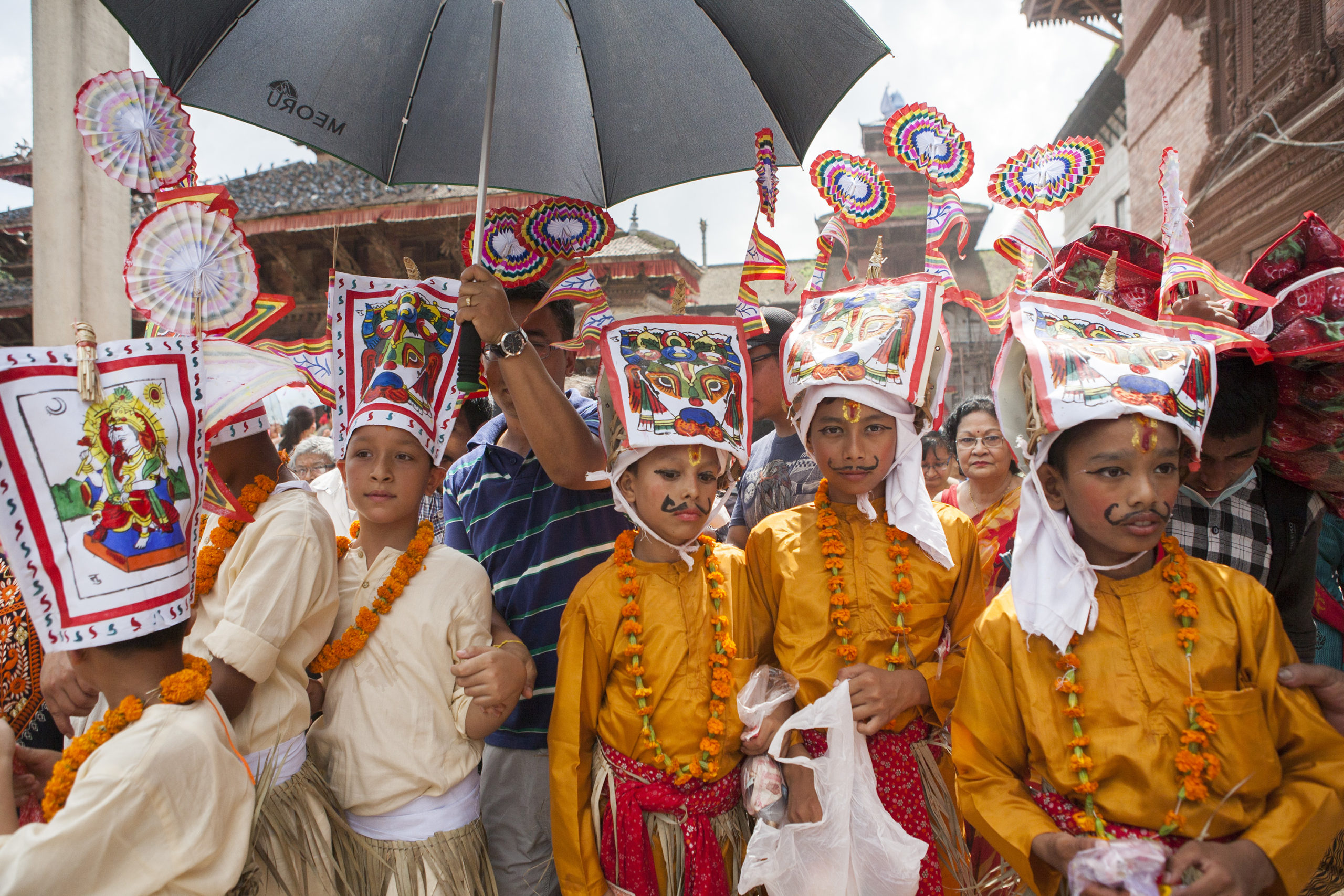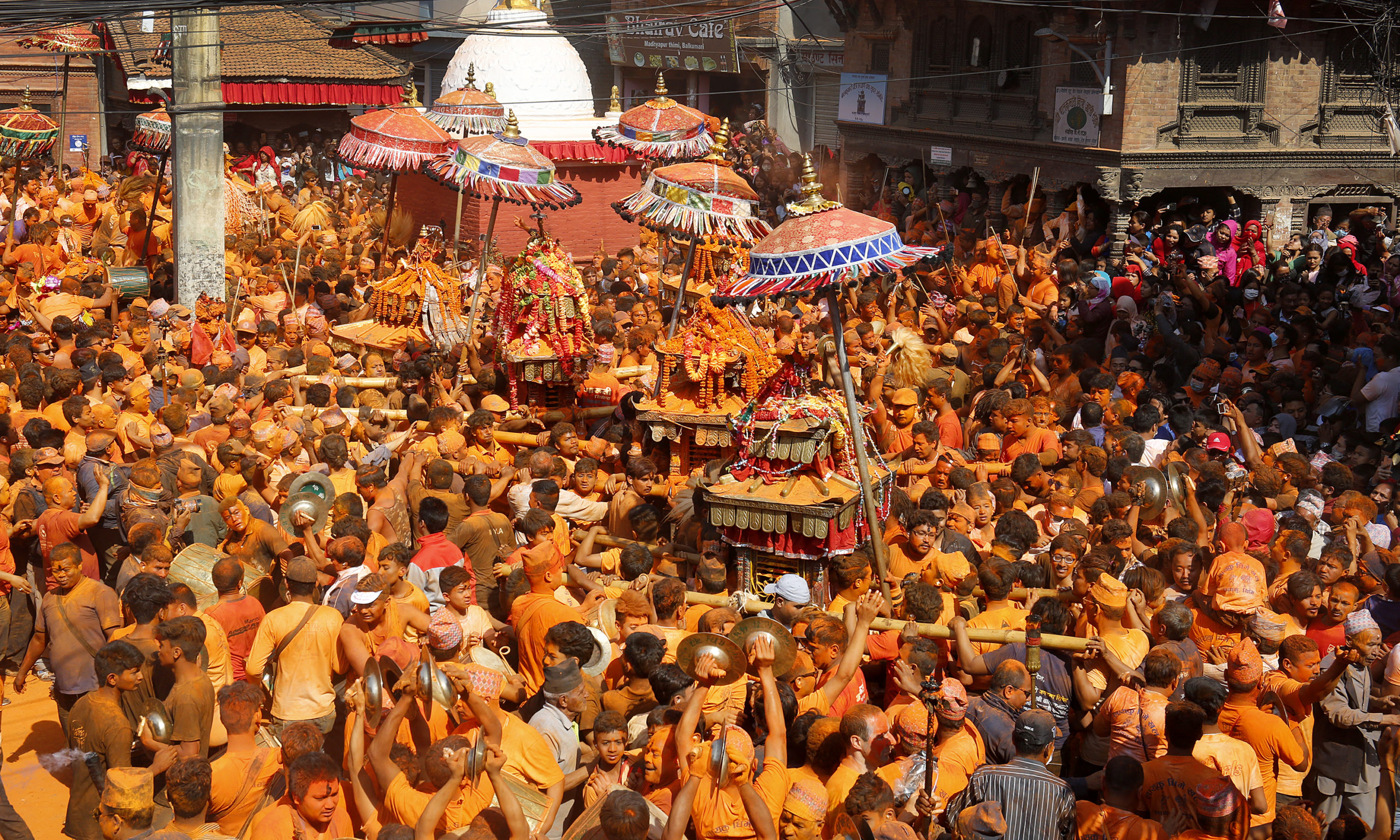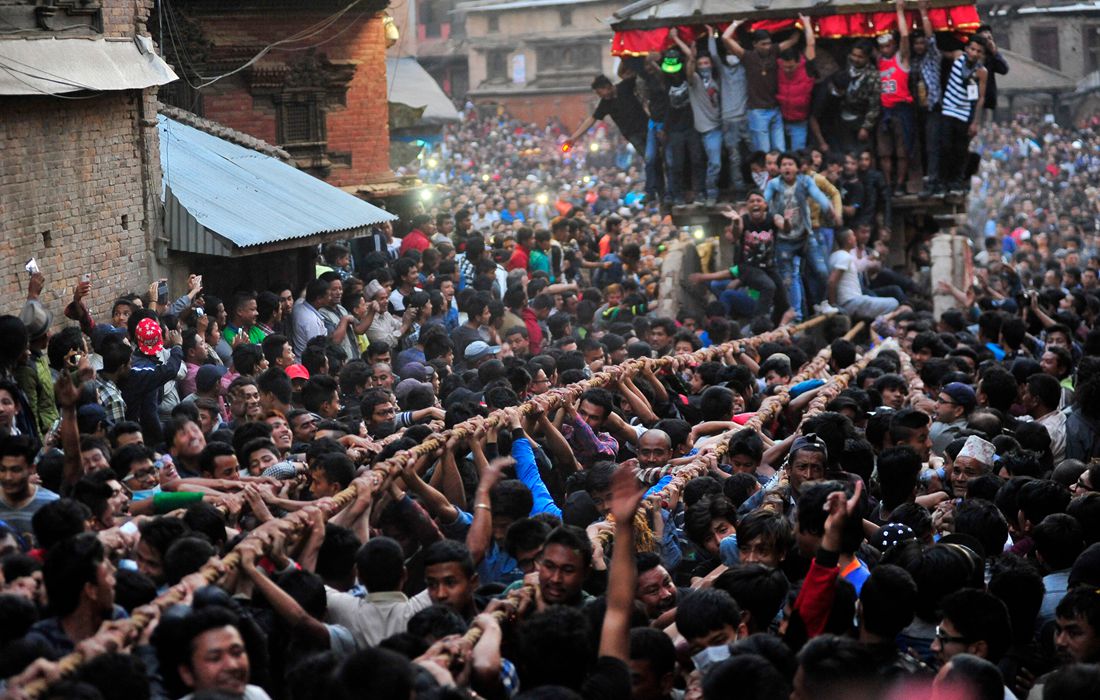Epidemic : The Nepali Festivals Believed To Have End The Epidemics
Different Festivals
Many epidemic spread in our society fifteen hundred years ago. How could an epidemic have been treated in a society where science and technology have made it difficult to control an epidemic? In modern times, it has been challenging to see a variety of epidemic in humans who grew up eating groundnuts.The global human community is at risk of fighting such complex epidemic that appear at different intervals. society and historical and cultural festivals are connected with such epidemic. The big pilgrimage festivals celebrated across the country have been created due to such epidemic.

Even though science is considered to be the most advanced technology in the world today, thousands of years ago, there was no scientific cure for such epidemics. At that time, people used religion and culture as medicine to stop the epidemic. Legend has it that the famous festivals of the valley like Wisket Jatra, Indra Jatra, Rato Machhindranath Jatra, Devi Nach, Kattik Nach were started to stop the epidemic.‘Various pilgrimages were created in the valley in the Middle Ages to prevent epidemics. Searching for the history and legends of these pilgrimages, Jada was found to be involved in the treatment of epidemics, people use religion and culture to prevent uncontrollable epidemics, and also start new traditions.

Festival due to epidemic
The Nanicha Jatra, celebrated during the Indra Jatra, was also started to cure children after they contracted the disease. The journey was started by the locals about 1,200 years ago when the children of the Newar community in the valley started crying due to an unknown disease (runche disease). According to Shrestha, the corona virus, which is currently spreading in the world, was a virus of modern disease, but the calamities of the Middle Ages were different.There were complex epidemics such as when there was no rain, when there was famine, when there was drought, when people and animals died from unknown diseases. It is found that the society of that time used religion and culture to prevent such epidemics. Shrestha said that the epidemic was creating a sense of global brotherhood as it was pleasant for the entire human race to be united against such a disease. ‘It has a great meaning in the world community, it has increased the importance of internationalism, the essence of the Jatra festival we have is to be contemporary,
To combat an epidemic and to prevent it, people used to worship the deity, perform Mahayagya, worship on stones, make idols, start new festivals in his name, offer sacrifices, but modern science does not accept these things. Culture and religion would have been used more.According to him, Saraswati and Goddess were worshiped when any disease appeared in children at that time. Epidemic diseases had spread in Nepal even during the Malla and rule. ‘The world today is well versed in science and technology, but there is a tendency to focus on the religious and cultural aspects as diseases that appear as epidemics cannot be controlled by science.

BHAKTAPUR, NEPAL, KATHMANDU, NEPAL – 2017/04/10: Nepalese devotees pulling the chariot of Bhairab during the first day of the Bisket Jatra Festival at Taumadi, Bhaktapur. The Bisket Jatra festival is a week long festival celebrated at Bhaktapur during Nepalese New year celebration. (Photo by Narayan Maharjan/Pacific Press/LightRocket via Getty Images)
In Hindu society, it is considered good to light a lamp for the self-peace of the deceased, unity of the country and social harmony. ‘In the end, what man needs is God, when the science he has created cannot control him, people become helpless, and go to temples and shrines to worship., religious countries can establish a backbone called Corona Devi to prevent the spread of the corona virus. He said that it was customary to make the back of the goddess after any incident even before this. He said that since such a tradition is more prevalent in Hindu society, it would be considered good in religious and cultural aspects.
-There is a legend that many epidemics spread in our society fifteen hundred years ago. How could an epidemic have been treated in a society where science and technology have made it difficult to control an epidemic? In modern times, it has been challenging to see a variety of epidemics in humans who grew up eating groundnuts.The global human community is at risk of fighting such complex epidemics that appear at different intervals. society and historical and cultural festivals are connected with such epidemic. The big pilgrimage festivals celebrated across the country have been created due to such epidemics.
Speaking on the occasion, Satya Mohan Joshi, a man of the century, said that no epidemic had spread around the world till he was 100 years old. “At that time, the people of Palpa were living indoors, but there was no such thing as an epidemic in the world.

Festival due to epidemic
According to legend, the epidemic spread in Nepali society is the cure. There were more epidemics in ancient and medieval times. There is no written evidence of such an epidemic. The Jatra festivals are currently witnessing this. ‘Science and technology have narrowed the world, where what is happening can be known in an instant-Epidmic
The spread of an unstoppable epidemic even in such a technological age is a great challenge for the world of science.If there is a natural or man-made disaster, people’s attention will go to the spiritual power, a similar epidemic had spread in the valley during the Malla period. Due to which one third of the people of Kathmandu had lost their lives.
During the Malla period, the people of Kathmandu celebrated Dashain during the Malamas, due to which one-third of the people along with the then King Bhaskar Malla lost their lives. Although the people of Bhaktapur and Patan did not observe Dashain in Malamas, no one was killed, but Kantipur had to bear heavy losses.such an epidemic had spread even during the Shah’s reign. Due to which many animals and birds died in the valley and the disease spread to humans.

Festival due to epidemic Notes Nepal
Similarly, peace was worshiped on nine planets in the year 2018 BS after rumors spread that the earth would turn upside down. The government had conducted Mahayagya in some places to prevent such incidents. Dolakha Bhimsen temple is also associated with a religious belief and belief. It is believed that Bhimsen should be worshiped if he sweats. After sweating, the priests of the palace offer prayers after wiping the sweat with cotton and handing it over to the court.-epidemic
Then the sweating stops. “Both modernity and originality are important nowadays,” he said. “In countries like Europe, there is only modernity. We also have spiritual power, so we are different from others.
FAQ’S
Which are the festivals that happened due to epidemics?
List of festivals in Nepal that happened due to epidemics?
Comment Here!